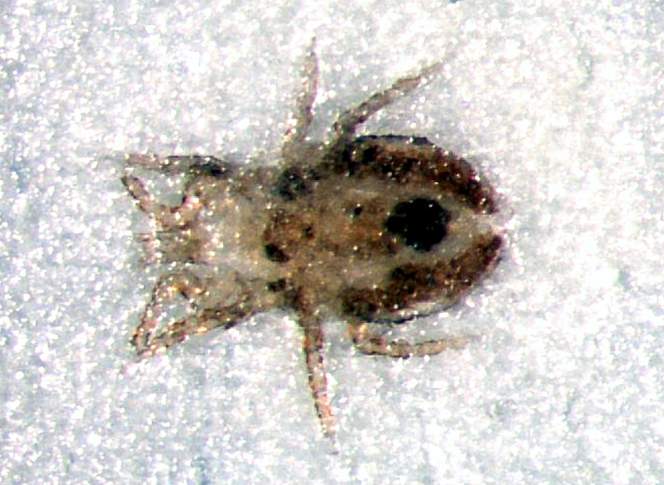How To Deal With The Tiny, Itch-Inducing Bird Mite
Bird mites would top a list of regularly misunderstood pests.
August 17, 2017

Bird mite macro

Bird mites would top a list of regularly misunderstood pests. For people who are unfamiliar with these creatures, they are tiny arachnids that suck the blood of the birds nesting in backyards. But under the right conditions, these same mites can wander indoors and inadvertently bite humans.
Without previous knowledge or experience with bird mites, the first inclination upon discovering them may be to do a quick Google search to learn more. Unfortunately, the internet is rife with misinformation about these creatures.
In the age of fake news, here’s another gentle reminder to assess the credibility of online sources. Search results may yield websites full of misleading, downright wrong, and in some cases, dangerous management recommendations about bird mites. University of Wisconsin-Madison Insect Diagnostic Laboratory clients have required consolation on multiple occasions because they’ve read about bird mites online — where they were led to believe that the mites will be infesting themselves, their homes and vehicles indefinitely.
At less than one millimeter long, bird mites are very small. However, they can be seen with the naked eye, and their nearly constant movement helps give them away. Perhaps the best description of their appearance is walking flakes of pepper.
Under magnification, bird mites have a somewhat tick-like appearance with eight legs and long, prominent mouthparts. The mites are often whitish in color with some black spots on the body that can turn darker after feeding.
Each year, 10-20 bird mite cases typically turn up during the spring and summer months at the lab. These mites can be quite common, but simply aren’t encountered unless a bird builds a nest very close at hand: under a back deck, on a patio light fixture, in a gutter or a damaged soffit area or in a shrub just outside a bedroom window.
True to their name, bird mites are parasites that feed on the blood of birds. These mites are often most noticeable when young birds have just left the nest and the mites wander desperately looking for a blood meal.
Bird mites have a brief time to live without an avian host, but they can make their way indoors where they can crawl on and errantly attempt to bite humans and pets. While the mites can be an itchy tingly nuisance, they are unable to survive on humans or in homes for any significant length of time. Scientific literature suggests that when parted from their avian hosts, common bird mites may be able to survive a matter of weeks only under the most ideal of conditions. In most cases, conditions for these mites away from birds are so hostile and dry that survival is limited to a few days at best, especially in a modern home with air conditioning.
As with many pest control situations, eliminating the source of the problem often brings about rapid results, and bird mites aren’t any different. If these pests are found, removal of a bird nest once the birds have left is the single most crucial step. Like flipping a switch, mite activity typically drops off rapidly within a day or two of the nest being removed.
As for the indoors, desiccation is probably the biggest threat to bird mites, so running an air conditioner and/or dehumidifier may help hasten their demise. Vacuuming, using sticky tape or wiping up mites with a damp soapy cloth can all help eliminate any additional stragglers that made it inside. Pest control professionals typically also apply to residual insecticide product to nearby areas to help control any residual mites.
Feeling itchy yet? Don’t worry, bird mites are an annoying but simply solved nuisance.
University of Wisconsin-Extension entomologist PJ Liesch is director of the UW-Madison Insect Diagnostic Lab, where he blogs about Wisconsin insects and can be found @WiBugGuy on Twitter.
 Passport
Passport













Follow Us